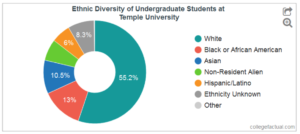Matthew Milligan
Staff Writer

With a community as diverse and accepting as this school, people may be curious as to why this community needs a Queer Straight Alliance.
As a member of the QSA, I have some insight into why having a QSA is not only important but essential to the SLA community.
First off, greatest challenges that queer people face is the ignorance of society. As a whole, America doesn’t spend a lot of time talking about LGBTQ+ people and if people do, it’s usually only in vague references to gay acquaintances or in terms of religion and civil rights.
So, while SLA may be accepting welcoming of queer people, as a community it is harder for people to understand what being queer is like.
A Queer Straight Alliance allows LGBTQ+ students to create a familial bond with fellow members of the queer community. This gives them the chance to bond over similar experiences and to seek and give advice to each other.
It is crucial for these kids to be able to do this since LGBTQ+ topics are not typically talked about by most adults or schools. For example, it is common for schools to only talk about heterosexual relationships in health education courses. At SLA, Health Teacher Pia Martin talks about safe sex between homosexual people and informs students about aids, which is something that not a lot of middle school health classes do.
It’s also a matter of physical well-being. Many queer kids initially have little or no knowledge about things such as sexual health or resources for LGBTQ+ people such as support or advocacy groups. When it comes to LGBTQ+ education, many kids are left with no other choice than to teach themselves. In the SLA’s QSA, we are lucky to have not only a larger number of queer adolescents, but also a queer teacher who is able to provide insight to younger and less educated members.
Along with aiding in the education of queer youth, the QSA helps students who are struggling to find their identity. At QSA there’s have a saying along the lines of, “What happens in QSA stays in QSA,” meaning that students can be “out of the closet” (as in openly queer) at QSA but not yet “out” to anyone else. This gives students the chance to explore who they are without fear of judgment from anyone else.
People may think that the QSA is just about its queer members, but it’s not. After all, it is called the Queer Straight Alliance for a reason. The SLA QSA wants to not only assist its LGBTQ+ members, but it wants to assist the heterosexual community at SLA as well by being welcoming and informative.
While I mentioned previously that the QSA allows members to socialize with fellow queer students, it is not the goal of the QSA to cut these students off from the larger population of SLA. Queer people want queerness to be normalized so that they do not always have to think of themselves as a completely separate community.
So if you want to be a true ally, consider joining QSA! The QSA’s goal is to have more people at SLA with an awareness of queerness so that they can become more educated and considerate people overall. The more informed and respectful we are as students about the diversity of our community, the better SLA will be.



